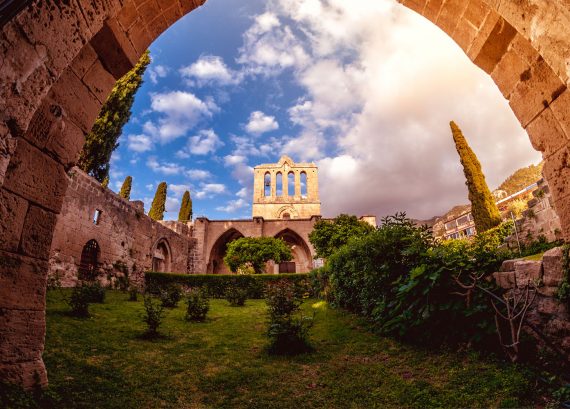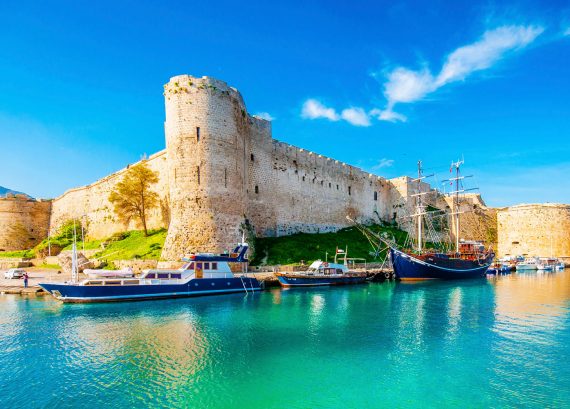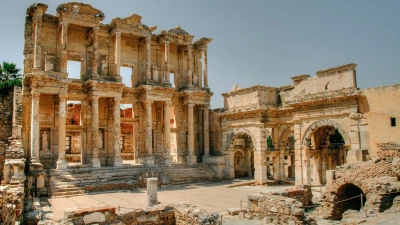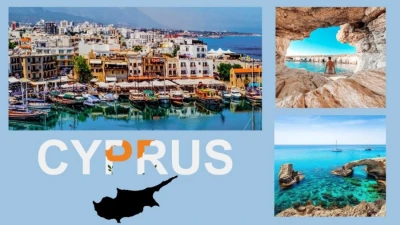
There are so many things to see in Northern Cyprus that it is very difficult to fit them into a short holiday. Therefore, we have compiled a suggestion that fits exactly into 5 days for you. With our guide, which provides detailed information on how to visit the most special places and how much time you should allocate for each, we aim to assist you.

Hz. Ömer Tomb
Sacred Visit
This tomb is the eternal resting place of not only Hz. Ömer but also 6 warriors and a Holy Man. The history of the tomb dates back to the Arab invasions of the 7th century, and before this date, this place was nearly a local pagan temple.
During the Ottoman period, a small mosque and mausoleum were built on this stunning coastline, and the remains were exhumed and reinterred.
In classical Cypriot tradition, the dervishes and the tekke growing around the monasteries of the tomb were highly respected by both Orthodox and Muslim communities before 1974.
This tomb was renovated in the 1950s, and today you can find enchanting carpets and rugs inside this tomb.

Bellapais Monastery
The beautiful village of Bellapais and its magnificent monastery are located at the foot of the Besparmak Mountains, rising south of Girne.
This village can be described as pure tranquility, providing an opportunity to escape from all the hustle and bustle of modern life that the lucky residents living among its quiet paths and whitewashed houses hardly enjoy. Truly, the name Bellapais comes from the French phrase “belle paix,” which means “beautiful place.”
The Bellapais Monastery, a prominent example of Gothic architecture, sits with its face turned towards the mountains. Its grandeur can be seen from afar, and the view from its square overlooking beautiful Northern Cyprus, Girne, and the Mediterranean is simply breathtaking.

Kyrenia Castle
If only the magnificent walls could talk!
The first recorded historical event regarding the castle is the capture of the castle by King Richard when he defeated the governor Isaac Comnenus, who suddenly emerged and declared his own empire during the 3rd Crusade in 1191.
The four-tower structure associated with the Byzantine walls was later reinforced and expanded by the Lusignans, but the castle took its present form after being taken over by the Venetians in 1489.
The Venetians were worried about the imminent invasion of Cyprus by the rapidly expanding Ottoman Empire. With the Ottoman homeland just a few kilometers away and their forces growing stronger every year, the Venetians began to strengthen the borders of Cyprus.
Kyrenia Castle stands at the entrance of the famous harbor of the city, positioned like a majestic protector at the quay. This castle, which is worth a visit, has been well-preserved and remains open to the public.
With its large rectangular structure, the castle houses a cistern, dungeon, church, and two small museums, and one should enjoy walking along the castle walls overlooking the harbor.
Kyrenia Castle not only provides a fascinating glimpse into the history of the city but also hosts the Shipwreck Museum, which displays some of the most significant and well-preserved pieces of maritime history.
After leaving the castle, you will take a journey through time while having lunch at the historic Kyrenia harbor.

Karmi Village
The atmosphere of this village will enchant you...
Also known as Karaman, this village was abandoned by the Greek Cypriots residing there after the Cyprus Peace Operation in 1974, and as the houses in the village became ownerless, it almost resembled a ghost town.
In 1979, the Council of Ministers decided to implement a renovation project to revive this small but charmingly scenic village and to promote residential tourism.
To preserve the village’s atmosphere, great care has been taken to maintain all traditional textures, such as wooden roof beams, reeds used for roofing, and restrictions for roof placements, while modern accommodations address needs without compromising the unique characteristics of the village. Each house even has its own name written at its entrance.

Salamis Ancient City
A massive ancient city unearthed from beneath the sands
It is believed that Salamis was the capital of Cyprus until the late Bronze Age, around 1100 BC.
This large city, located on the eastern side of the island, north of Gazimağusa, has been governed throughout its history by numerous dominant groups, including the Assyrians, Egyptians, Persians, and Romans, and managed to survive. However, it ultimately succumbed to nature.
















